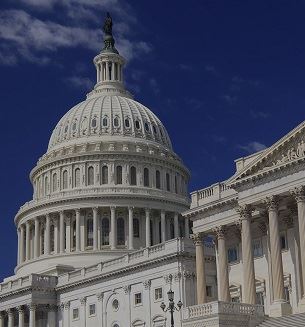Experienced Federal Appeal Attorneys: Knowledgeable Depiction for Complicated Cases
Experienced Federal Appeal Attorneys: Knowledgeable Depiction for Complicated Cases
Blog Article
Debunking the Refine of Federal Appeals: What You Required to Know
Browsing the elaborate world of government appeals can typically seem like going across undiscovered waters for those not familiar with the process. Recognizing the nuances of appellate court territory, the intricacies of submitting a notification of appeal, presenting a compelling short, and making a persuasive dental debate are important components that can significantly impact the outcome of an instance. By unwinding the layers of complexity bordering federal allures, individuals can get a more clear insight right into the systems that regulate this crucial stage of the lawful system.
Comprehending Federal Appeals Refine
Looking into the detailed world of the federal allures process introduces a systematic and organized journey through the judicial system. Federal allures serve as an important device for evaluating choices made by reduced courts. Comprehending this procedure is essential for anyone included in legal process at the federal degree.
The procedure normally begins with a celebration dissatisfied with a reduced court's ruling submitting a notification of appeal. This sets off a testimonial by a higher court, where a panel of judges analyzes the lawful debates presented by both parties. Briefs laying out the lawful reasoning behind each celebration's placement are submitted, and oral disagreements might be heard to make clear complicated problems.
The appellate court's choice is based on an extensive exam of the lower court's proceedings and the debates presented. The courts do not review realities yet concentrate on whether lawful mistakes occurred that influenced the lower court's decision. Once the appellate court gets to a decision, it can affirm, reverse, remand, or change the lower court's judgment, providing quality and finality to the lawful dispute. Recognizing this process is crucial for navigating the intricacies of government charms successfully.
Appellate Court Territory Discussed
As we progress from understanding the federal appeals process to studying the details of appellate court jurisdiction, a basic aspect emerges relating to the authority and restrictions of these higher courts in the legal landscape. Appellate court jurisdiction refers to the range of situations that a particular appellate court has the power to decide and assess upon. Unlike test courts that listen to situations for the initial time, appellate courts are restricted to reviewing decisions made by lower courts. These decisions can consist of judgments from both state and government courts.
Appellate courts have jurisdiction over particular sorts of situations, commonly those entailing lawful mistakes, procedural problems, or inquiries of regulation instead of factual disputes. The territory of appellate courts is normally detailed in statutes and regulations that control the court system. Recognizing appellate court jurisdiction is crucial for events associated with the charms process as it figures out whether a case is eligible for testimonial and the extent to which the appellate court can intervene in the reduced court's decision.
Filing a Notice of Allure
The first action in beginning the federal appeals process entails filing a Notice of Charm with the appropriate appellate court. This critical record officially notifies the court and the other celebrations associated with the situation that the appealing celebration intends to seek an evaluation of the lower court's choice. Submitting a Notice of Allure is a stringent step-by-step demand that establishes the appellate procedure moving.
When preparing the Notification of Allure, it is important to guarantee compliance with the certain guidelines and standards of the pertinent appellate court. federal crime lawyer. The file should normally consist of info such as the case name, the reduced court's name, the day of the judgment being appealed, and a concise declaration suggesting the grounds for the charm

Instruction and Dental Argument
In the appellate process, offering created briefs and engaging in dental arguments play critical roles in promoting for the appealing celebration's setting before the appellate court. Briefs are detailed legal documents that outline the events' disagreements, legal authorities, and analysis sustaining their placements. These composed submissions supply the court with a comprehensive understanding of the realities of the case, the appropriate legislation, and why the appealing celebration believes the reduced court's decision ought to be rescinded.
Complying with the entry and testimonial of the briefs, dental debates use the events an opportunity to further clarify their placements, resolve any questions the appellate judges may have, and highlight bottom lines from their created briefs. Dental disagreements are a chance for the lawyers to convince the courts with verbal advocacy and responses to queries from the bench.
Both the composed briefs and dental debates are critical elements of the appellate process, permitting celebrations to offer their situation thoroughly and compellingly before the appellate court. - federal crime lawyer
Getting the Appellate Court Choice
The appellate court's decision is usually supplied in a written format and lays out the court's conclusions on the legal problems presented, the reasoning behind their decision, and the judgment provided. The time structure for getting the appellate court's choice can differ, but courts make every effort to give timely resolutions. Whether the appellate court affirms, reverses, or remands the reduced court's choice, recognizing the implications of the judgment is essential for all events involved in the appellate process.
Final Thought
Comprehending the appellate court jurisdiction, submitting a notice of allure, preparing briefs, and providing oral arguments are all vital parts of this process. Inevitably, receiving the appellate court decision can give clearness and resolution to lawful disputes.
As we progress from comprehending the federal charms procedure to exploring the ins and outs of appellate court jurisdiction, a basic element comes to light concerning the authority and restrictions of these greater courts in the legal landscape. Appellate court territory refers to the extent of situations that a certain appellate court has the power to examine and choose upon. Unlike test courts that hear instances for the very first time, appellate courts are limited to examining choices made by reduced courts. Understanding appellate court territory is important for events included in the allures process as it figures out whether a case is qualified for testimonial reference and the extent to which the appellate court can interfere in the lower court's choice.

Report this page